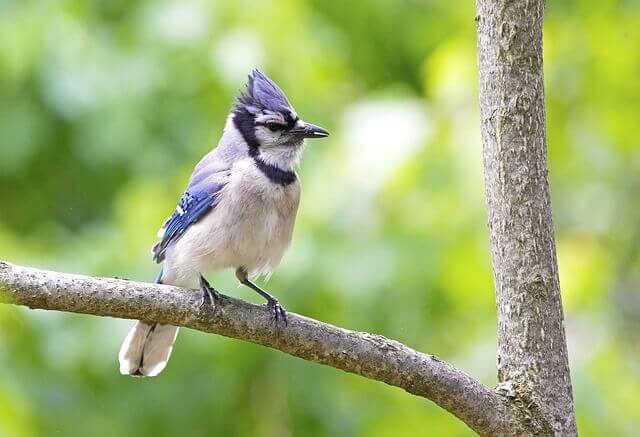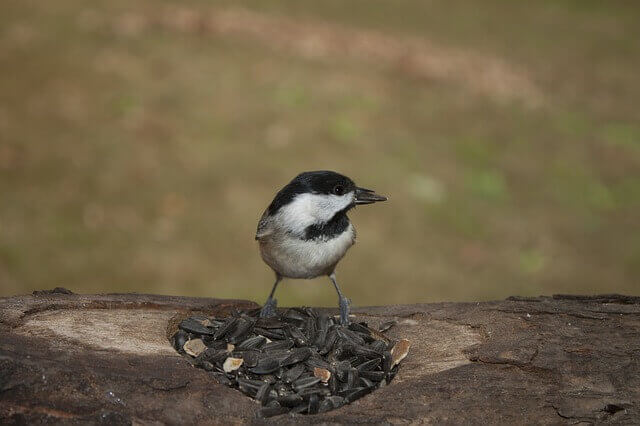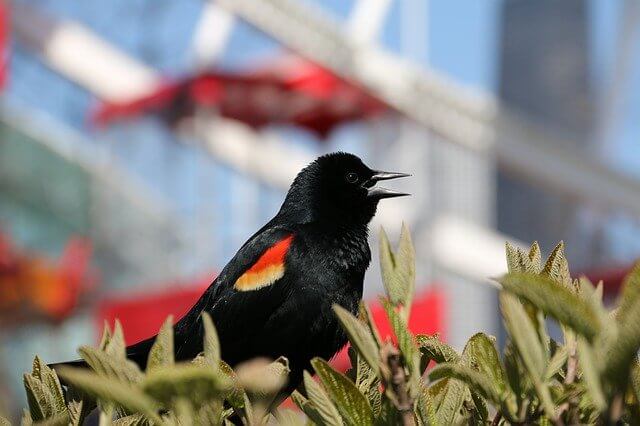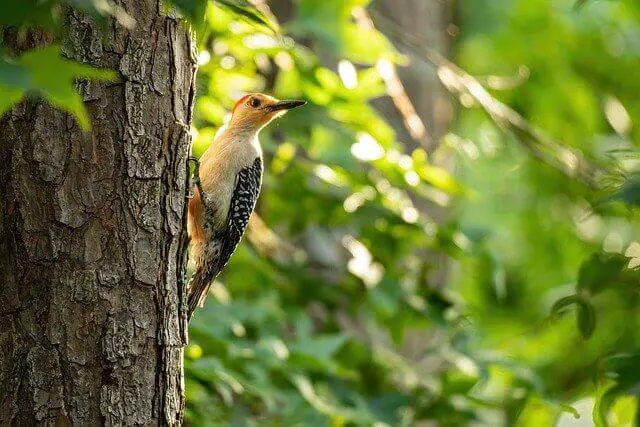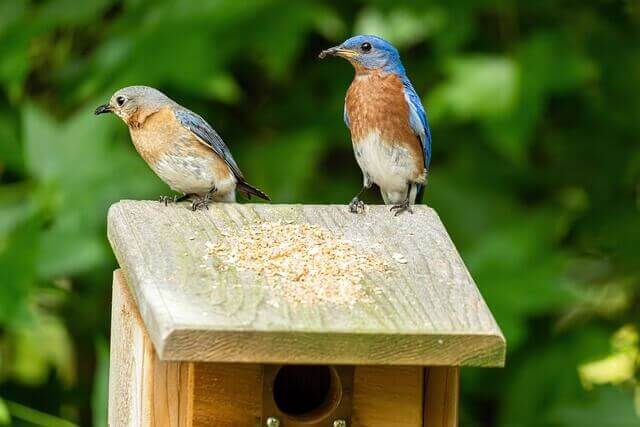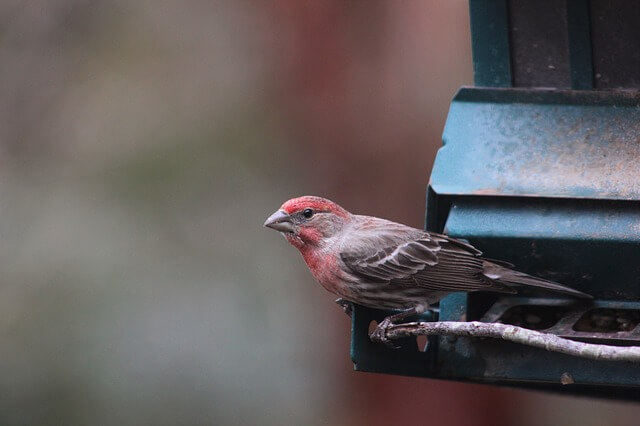Venture into Oklahoma’s diverse birding landscapes! From the sprawling plains to the serene lakeshores, Oklahoma boasts a fascinating array of bird species waiting to be discovered. In this ultimate guide, we’ll introduce you to the 60 most common birds you’re likely to encounter across the Sooner State. Whether you’re a seasoned birder or a budding enthusiast, this comprehensive guide will elevate your birdwatching adventures in Oklahoma.
Table of Contents
- 1 Most Common Birds In Oklahoma
- 1.1 Northern Cardinal
- 1.2 Mourning Dove
- 1.3 American Crow
- 1.4 Blue Jay
- 1.5 European Starling
- 1.6 Carolina Chickadee
- 1.7 Northern Mockingbird
- 1.8 American Robin
- 1.9 House Sparrow
- 1.10 Carolina Wren
- 1.11 Red-winged Blackbird
- 1.12 Red-bellied Woodpecker
- 1.13 Tufted Titmouse
- 1.14 Eastern Bluebird
- 1.15 Downy Woodpecker
- 1.16 Dark-eyed Junco
- 1.17 Killdeer
- 1.18 House Finch
- 1.19 American Goldfinch
- 1.20 Eurasian Collared-Dove
- 2 Frequently Asked Questions
- 2.1 What’s the most common bird in Oklahoma?
- 2.2 What kind of birds are native to Oklahoma?
- 2.3 What is the rarest bird in Oklahoma?
- 2.4 What bird sings at night in Oklahoma?
- 2.5 What wrens are in Oklahoma?
- 2.6 Does Oklahoma have ravens or crows?
- 2.7 Does Oklahoma have grouse?
- 2.8 Are there grackles in Oklahoma?
- 2.9 Are there blue jays in Oklahoma?
- 2.10 Are there Whippoorwills in Oklahoma?
- 2.11 Are there meadowlarks in Oklahoma?
- 3 Author
Most Common Birds In Oklahoma
Northern Cardinal
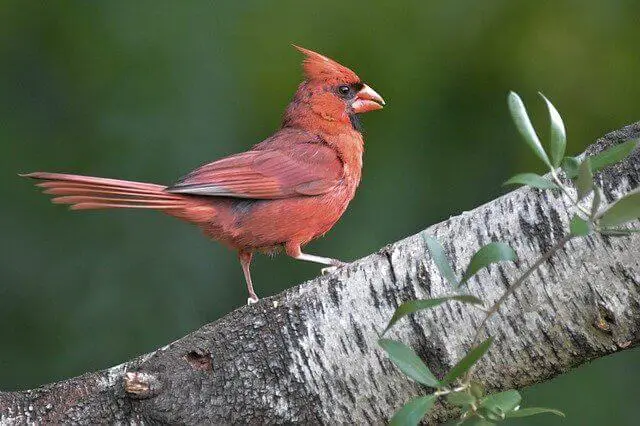
The Northern Cardinal is one of the most prominent and well-known birds in North America. It is a medium-sized songbird with a distinctive red plumage. The male Northern Cardinal is particularly vibrant, with a bright red body and black face. The female is less brightly colored, with a grayish-brown body and reddish wings. The Northern Cardinal has a wide range, stretching from the southeastern United States all the way up to Canada.
It prefers habitats with dense vegetation, such as forests and shrublands. The bird feeds on seeds, fruits, and insects. In wintertime, when food is scarce, the Northern Cardinal will often visit backyard bird feeders to supplement its diet. This is a popular bird among birdwatchers and amateur ornithologists alike.
- Frequency: 51.18% (Statistic: eBird)
- Color: Mostly red with a black mask on the face, short pink bill
- Habitat: woodlands, gardens, parks, backyards, and wetlands
- Range: USA, Canada, Mexico
- Size: 8.2 – 9.3″ inches
- Weight: 33 – 65 grams
- Diet: Fruits, berries, and insects (grasshoppers, beetles, snails, cicadas)
- Family: Cardinalidae
- Genus: Cardinalis
Related:
- 10 Best Bird Feeders for Cardinals (Rated for 2022)
- Best Birdhouse for Cardinals 2022 (Tested And Rated)
- Cardinal Bird Facts You Never Knew
Mourning Dove
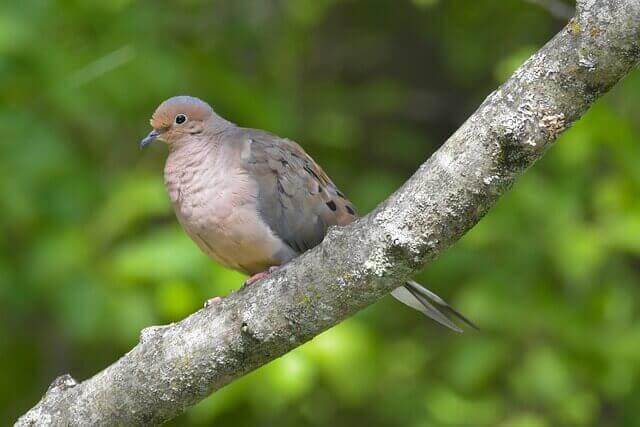
Mourning doves are common birds found throughout North America. They get their name from their mournful cooing call. Mourning doves are gentle birds that are a symbol of peace. Mourning doves are mostly gray with a pinkish hue on their breasts. They have a long, pointed tail and small head. They range in size from 11 to 14 inches long and weigh between 4 and 6 ounces.
Mourning doves live in open areas like fields, prairies, and deserts. You can also find them near human habitation like farms, parks, and suburban areas. In the winter, they migrate south to avoid the cold weather. Mourning doves eat seeds that they find on the ground. They also eat insects and berries. You can attract them to your yard by putting out birdseed for them to eat.
- Frequency: 38.14%
- Color: Light gray-brown and lighter and pinkish below. The wings have black spots.
- Habitat: Open habitats, urban areas, farms, prairie, grassland, wooded area
- Range: USA, Canada, Mexico, Central America, Greater Antilles
- Size: 11-14″ inches length
- Weight: 112 – 170 grams
- Diet: Rapeseed, corn, millet, safflower, sunflower seeds, pokeberry, sesame, and wheat.
- Family: Columbidae
- Genus: Zenaida
Related:
- Best Bird Feeder For Doves (Reviewed & Tested for 2022)
- Facts About Mourning Doves – 10 Things You Need To Know!
American Crow
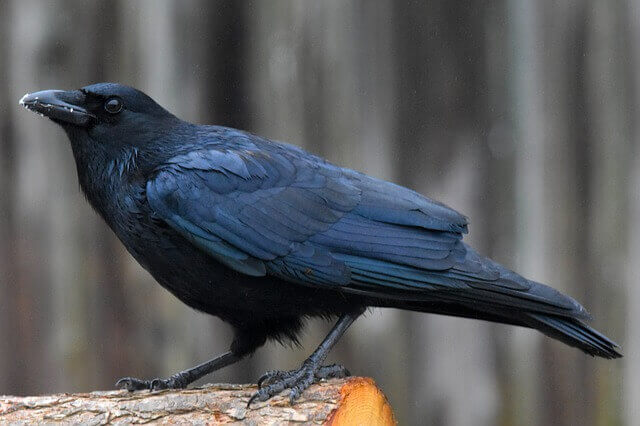
The American crow (Corvus brachyrhynchos) is a medium-sized bird that is a member of the Corvidae family. The American crow is found in North America, specifically in the United States and Canada. The bird’s range extends from Alaska to Newfoundland and southward into Mexico. The American crow is not found in Hawaii.
The American crow prefers to inhabit open areas such as fields, pastures, and woodlands edges. Crows will also live in urban areas such as cities and towns. The bird’s nest is usually built in trees, but can also be found in bushes and on ledges. The diet of the American crow consists of insects, small mammals, frogs, reptiles, eggs, carrion, nuts, berries, and garbage.
- Frequency: 36.54%
- Color: Black
- Habitat: Open country, farms, parks, woodlands, towns, cities
- Range: Canada, USA, Mexico
- Size: 16 – 21″ inches
- Weight: 315 -620 grams
- Diet: Invertebrates, carrion, seeds, eggs fish, grains, mice, frogs, and other small animals.
- Family: Corvidae
- Genus: Corvis
Related: How To Attract Crows To Your Backyard: Expert Tips!
Blue Jay
The Blue Jay is a striking bird found throughout North America. Easily identified by its blue plumage and white chest, the Blue Jay is a common sight in backyards and parks. These birds are known for their loud calls and acrobatic flying displays. Blue Jays are found in wooded areas across North America, from Alaska to Florida. They prefer habitats with dense trees and plenty of food sources.
In the winter, these birds often form small flocks and can be seen foraging for acorns and nuts. The diet of a Blue Jay consists mostly of insects and other invertebrates. However, these birds will also eat fruits, nuts, and seeds. They have been known to cache food in order to survive lean times.
- Frequency: 34.64%
- Color: Blue crest on the head, wings, back, and tail, and has a white face and belly
- Habitat: Deciduous and mixed forests, mixed woodlands, backyards, parks
- Range: Southern Canada, Eastern and Central United States, Florida and Texas
- Size: 8 – 12″ inches
- Weight: 70 – 100 grams
- Diet: Nuts, seeds, caterpillars, grasshoppers, and beetles
- Family: Corvidae
- Genus: Cyanocitta
Related:
- 15 Best Bird Feeders For Blue Jays (Tried & Tested 2022)
- What Attracts Blue Jays to your Yard?(Expert Tips)
- What Does A Blue Jay Eat? (10 Favorite Foods Revealed!)
European Starling

The European Starling is a medium-sized songbird belonging to the family of Sturnidae. The adult has glossy black plumage with a metallic sheen, long pointed wings and a short tail. The bill is also long and pointed. The legs are pinkish-brown. The juvenile has browner plumage and lacks the glossy sheen. It also has shorter wings and tail.
The European Starling occurs naturally in Europe, Asia and North Africa. It has been introduced to Australia, New Zealand, the U.S. and Canada. In Europe, it is found in open habitats such as farmland, steppes and grassland with some trees. In Asia and North Africa, it occurs in more arid habitats such as deserts and scrubland.
- Frequency: 33.19%
- Color: Black with glossy iridescence plumage
- Habitat: Forests, woodlands, backyards, edges, yards, and parks
- Range: North America, Europe, Africa, India, Middle East, China
- Size: 7 – 9″ inches long
- Weight: 60 – 100 grams
- Diet: Insects (ants, beetles, invertebrates), fruits, seeds, berries
- Family: Sturnidae
- Genus: Sturnus
Related: How To Attract European Starlings To Your Yard Fast?
Carolina Chickadee
The Carolina chickadee is a small songbird with a black cap and bib. They are found in the southeastern United States, from North Carolina to Texas. Their habitat includes woodlands, forests, and gardens. Chickadees are non-migratory birds and will stay in their ranges year-round. The diet of the Carolina chickadee consists of insects, spiders, berries, and nuts.
Chickadees will forage for food in trees and shrubs. They will also visit bird feeders. Carolina Chickadees are important seed dispersers for many plants. Chickadees are sociable birds and often flock together. They are not territorial birds, but will chase other chickadees away from their nesting sites. The Carolina chickadee has one mate per breeding season.
- Frequency: 32.25%
- Color: Black cap and throat with white cheeks. Light gray wings, back, and tail.
- Habitat: Deciduous forests, suburbs, parks, backyards
- Range: USA ( Texas, Florida, New Jersey, and Kansas)
- Size: 4.5 – 5.1″ inches long
- Weight: 9 – 12 grams
- Diet: Insects, berries, seeds
- Family: Paridae
- Genus: Poecile
Related: Carolina Chickadees – 9 Best Ways To Attract Them Fast!
Northern Mockingbird
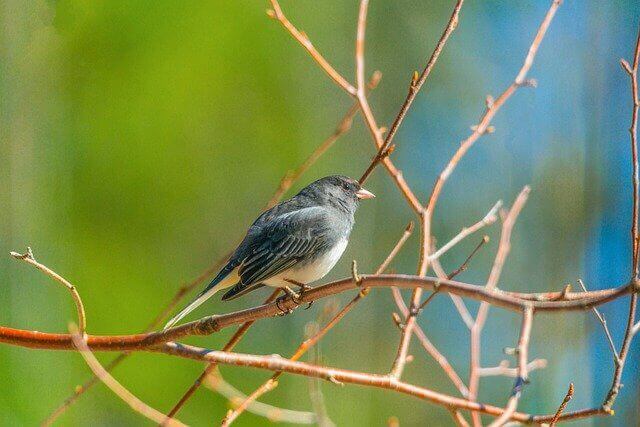
The Northern Mockingbird (Mimus polyglottos) is a medium-sized songbird with a long tail and gray plumage. The Northern Mockingbird is found in North America from southern Canada to northern Mexico. The bird’s habitat consists of open woodlands, forests, farmlands, and suburban areas. The mockingbird is the state bird of four states: Arkansas, Florida, Mississippi, Tennessee, and Texas.
The Northern Mockingbird diet consists of insects, earthworms, berries, and fruits. The bird forages on the ground or in trees for its food. The mockingbird uses its long legs and toes to hop around on the ground in search of food. The bird also has a long beak that it uses to peck at its prey. The Northern Mockingbird is known for its singing ability.
- Frequency: 31.69%
- Color: Gray upperparts with white underparts. Black and white wing bars.
- Habitat: Forested areas, parks, and gardens
- Range: Southeastern Canada, USA, Northern Mexico, Cayman Islands, Greater Antilles
- Size: 8.0 – 11″ inches long
- Weight: 40 – 58 grams
- Diet: Berries, fruits, seeds, arthropods, earthworms, and occasionally lizards
- Family: Mimidae
- Genus: Mimus
Related: How to Attract Mockingbirds to your Yard? (Expert Tips)
American Robin
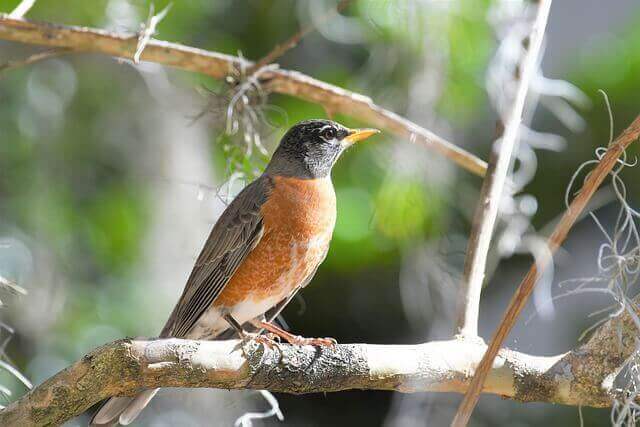
The American Robin is a beautiful migratory songbird, of the Order Turdidae family. A very common visitor to gardens across North America and Asia, it has made a name for itself as one of our most popular songbirds and second only to the sparrow.
These birds eats nectar from leafy bushes, suet, acorns, nuts, and berries.The best time for these birds to be active is from April through June. Their natural habitat are, wooded areas, backyards, parks, fields in the northern part of North America.
- Frequency: 31.63%
- Color: Mostly brown on the back with an orange colored breast
- Habitat: Wooded areas, backyards, parks, fields
- Range: USA, Canada, Mexico
- Size: 12 – 16″ inches
- Weight: 72 – 95 grams
- Diet: Fruits, berries and insects (earthworms, beetles, caterpillars
- Family: Turdidae
- Genus: Turdus
Related: Interesting American Robin Fun Facts
House Sparrow
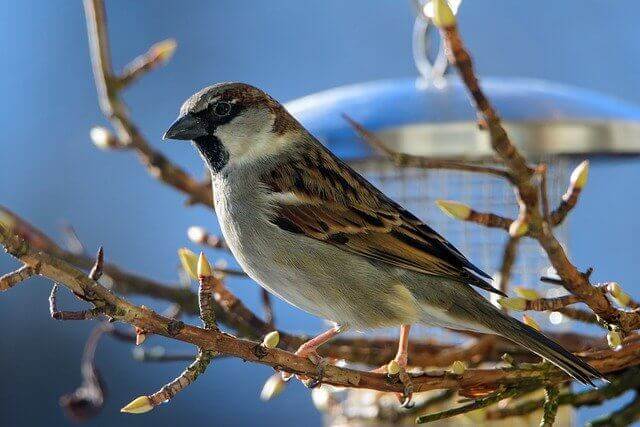
The house sparrow is a small bird with a short tail and stout bill. It is found in a wide range of habitats, from urban areas to rural farmland. The diet of the house sparrow is mostly composed of seeds and insects. They will also eat fruit and berries if it’s available. The house sparrow has a large range, extending from Europe and Asia to Africa and the Americas.
In North America, the house sparrow is found in most of the continental United States and southern Canada. The habitat of the house sparrow is quite variable. It can be found in open fields, gardens, parks, and even urban areas. The bird prefers areas with some trees or bushes for nesting. In agricultural areas, the bird may eat grains or other crop pests.
- Frequency: 27.95%
- Color: Gray head marking, a reddish-brown back, and gray underparts
- Habitat: Urban centers, suburban areas, backyards, edges, yards, and parks
- Range: North America, Central America, South America, Africa, Australia, New Zealand
- Size: 5.5 – 7.1″ inches in length
- Weight: 25 – 39 grams
- Diet: Insects, beetles, caterpillars, aphids,, grasshoppers, crustaceans, earthworms, vertebrates
- Family: Passeridea
- Genus: Passer
Related: How to Attract Sparrows to your Backyard
Carolina Wren
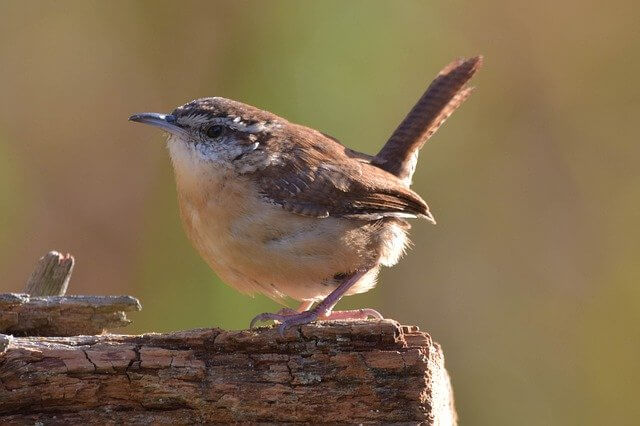
The Carolina Wren (Thryothorus ludovicianus) is a small songbird of the wren family. The Carolina Wren ranges across the southeastern United States, from North Carolina to central Texas and Louisiana. Small populations are also found in southern Ohio, Indiana, and Illinois. The Carolina Wren inhabits a variety of habitats including woodlands, gardens, marshes, and swamps.
They are most commonly found in urban and suburban areas where there are plenty of trees and shrubs for shelter. The Carolina Wren diet consists mostly of insects, but they will also eat spiders, snails, berries, and nuts. They forage on the ground or in low bushes searching for food.
- Frequency: 26.23%
- Color: Black cap and throat with white cheeks. Light gray wings, back, and tail.
- Habitat: Deciduous forests, suburbs, parks, backyards
- Range: USA ( Texas, Florida, New Jersey, and Kansas)
- Size: 4.5 – 5.1″ inches long
- Weight: 9 – 12 grams
- Diet: Insects, berries, seeds
- Family: Troglodytidae
- Genus: Thryothorus
Related: How to Attract Wrens to your Backyard? (Expert’s Guide)
Red-winged Blackbird
Red-winged blackbirds are a species of true blackbird. The males are all black with a red shoulder patch and a yellow wing bar, while the females are dark brown. These birds are found in open woodlands and marshes across North and South America. They prefer adamantly eating arthropods, berries, and seeds.
The red-winged blackbird has one of the largest ranges of any bird in the Americas. They can be found from Alaska all the way down to Tierra del Fuego. These birds prefer habitats with dense vegetation, such as marshes or wet meadows. However, they can also be found in drier areas such as prairies or farmland.
- Frequency: 25.63%
- Color: All black with red patches on shoulder and a yellow wing bar.
- Habitat: Deciduous forests, conifers, roadside, rivers, backyards, parks.
- Range: North America, Central America
- Size: 6.7 – 7.1″ inches length
- Weight: 41.5 – 65 grams
- Diet: Seeds and insects (butterflies, dragonflies, moths, frogs, worms, spider, snails, carrion, flies.)
- Family: Icteridae
- Genus: Agelaius
Red-bellied Woodpecker
The Red-bellied Woodpecker ranges from southeastern Canada to central Florida and along the Mississippi Flyway. They are found in wooded areas, including deciduous, mixed, and coniferous forests. The diet of the Red-bellied Woodpecker consists mainly of insects, but they will also eat fruit and nuts. The Red-bellied Woodpecker is a medium-sized woodpecker with a black back and white underparts.
The head is black with a red nape and crown. The wings are black with white bars. The outer feathers of the tail are black with white tips. Adult males have a red belly, while females have a grayish belly. Juveniles have a brownish belly. This bird can be found year-round in the eastern United States.
- Frequency: 24.67%
- Color: Gray on body and face and underparts. Black and white pattern on wings, back, and tail.
- Habitat: Forests, backyards
- Range: Southern Canada, Eastern United States, Florida.
- Size: 9 – 10.6″ inches long
- Weight: 56 -91 grams
- Diet: Insects, tree frogs, eggs of small birds, oozing sap, and small fish.
- Family: Picidae
- Genus: Melanerpes
Related: How to Attract Red-bellied Woodpeckers to your Yard?
Tufted Titmouse
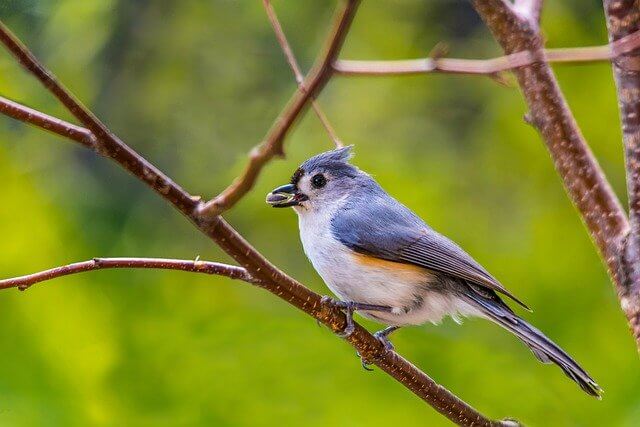
The Tufted Titmouse is a small songbird whose range extends from the United States into eastern North America. These birds are easily identified by their gray bodies and white undertails. They also have a conspicuous tuft of feathers on their head, which gives them their name. Tufted Titmice are found in both deciduous and coniferous forests, but they seem to prefer areas with dense vegetation.
In the winter, these birds often form flocks with other titmice and chickadees. Tufted Titmice mostly eat insects, but they will also consume berries and other fruits. These birds typically forage for food in trees and shrubs. They will also visit bird feeders in search of sunflower seeds or other types of birdseed.
- Frequency: 22.33%
- Color: Gray upperparts, white front, a tufted gray crest on the head.
- Habitat: Deciduous forests, river basin, backyards, swamps.
- Range: Canada, USA, and Mexico
- Size: 5.5 – 6.4″ inches
- Weight: 18 – 26 grams
- Diet: Nuts, insects, berries, seeds small fruit, and snails.
- Family: Paridae
- Genus: Baeolophus
Related: How to Attract Tufted Titmouse to my Yard
Eastern Bluebird
The Eastern Bluebird is a small thrush found in North America. The adult has blue upperparts, a rusty-red breast and belly, and white undertail coverts. It averages 16.5 cm in length and 32 g in weight. The breeding range of the Eastern Bluebird extends from southeastern Canada to the Gulf Coast of the United States.
It is found in open woodlands, farmlands, and urban parks and gardens. The bird nests in tree cavities or nest boxes. The Eastern Bluebird consumes primarily caterpillars, insects, grasshoppers, and berries. In summer, it will consume fruits as well.
- Frequency: 22.26%
- Color: Has a blue head, back, and wings with a reddish-brown breast.
- Habitat: Open woodlands, farmlands, and orchards.
- Range: Southern Canada to the Gulf states, East of the Rockies and south to Arizona to Nicaragua.
- Size: 5.5 – 7.1″ inches in length
- Weight: 20 – 33 grams
- Diet: insects and other invertebrates
- Family: Turdidae
- Genus: Sialia
Related:
- 68 Fun Facts About Eastern Bluebirds (You Didn’t Know!)
- How to Attract Eastern Bluebirds to your Yard (Explained)
- 9 Best Birdhouses for Bluebirds (Top Picks for 2022)
Downy Woodpecker
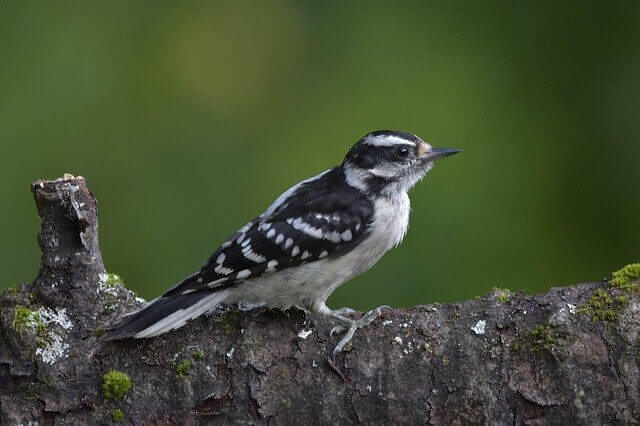
The Downy woodpecker is a North American woodpecker. The adult Downy has a black back with white spots, a black head with white stripes, a black tail with white outer feathers, and a white belly. The male woodpecker has a red spot at the back of his head, whereas the female does not. Young birds are similar to adults, but have less distinct appearances. Downy woodpeckers inhabit forests throughout all of North America.
They prefer deciduous forests, but can also be found in coniferous forests and mixed woods. They are most common in the eastern United States and Canada, but can also be found in the western United States and Mexico. Downy woodpeckers eat insects, spiders, berries, and nuts. Their long tongue helps them reach insects that are hidden inside tree bark.
- Frequency: 21.71%
- Color: Black with a white throat, belly, and back. White spots on wings
- Habitat: Deciduous forests and thickets, roadside, grasslands, backyards, parks
- Range: Canada, USA, and Mexico
- Size: 5.5 – 7.1″ inches in length
- Weight: 20 – 33 grams
- Diet: Mostly insects and beetles and ants, also gall wasps, caterpillars
- Family: Picadae
- Genus: Dryobates
Related: How to Attract Downy Woodpeckers to Your Yard? (Easy!)
Dark-eyed Junco
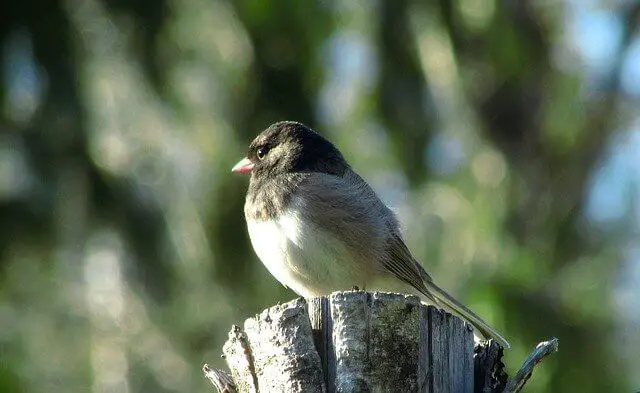
The Dark-eyed Junco is a small sparrow with a slate-gray back and white belly. They have a dark brown stripe on their head and a pink bill. The male and female look similar, but the male has a darker head stripe. The Dark-eyed Junco is about 6 inches long with a wingspan of 8 inches. The Dark-eyed Junco is found in North America from Alaska to Newfoundland and south to California, Arizona, New Mexico, and Texas.
They are most common in the Rocky Mountains. In winter, they can be found in open woodlands, brushy areas, and gardens. The Dark-eyed Junco eats mostly seeds and insects. In summer, they eat mostly insects. In winter, they eat mostly seeds from plants such as ragweed, dock, dandelion, and thistle.
- Frequency: 20.08%
- Color: Gray head, neck, breast, gray/brown backs and wings, white underside
- Habitat: Wooded areas, forest edges, roadsides, gardens, parks.
- Range: USA and Canada
- Size: 5.1 – 6.9″ inches
- Weight: 18 – 30 grams
- Diet: Seeds, insects, and arthropods
- Family: Passeriformes
- Genus: Junco
Related: Fun Facts About Dark-eyed Juncos
Killdeer

The killdeer ranges from southern Canada to central Mexico. In North America, it is found in every state and province except Alaska, Hawaii, and Nunavut. The bird’s habitat includes open fields, golf courses, beaches, and parking lots. The killdeer is a small plover with long legs and a long bill. The adult bird has a black band across its chest and a white band on its belly.
The bird’s diet consists of insects, spiders, worms, and other small invertebrates. During the breeding season, the male killdeer performs an aerial display in which he dives toward the ground while calling out his distinctive “kill-dee” cry. The female lays her eggs in a scrape on the ground; both parents help to incubate them.
- Frequency: 19.99%
- Color: Brown-tan on upper body and white underneath. The white chest has two black bands, brown face with black and white patches.
- Habitat: Beach habitats and coastal wetlands and fields
- Range: USA, Southern Canada, and Mexico
- Size: 7.9 – 11″ inches long
- Weight: 72 – 120 grams
- Diet: Millipedes, worms, snails, spiders, and some seeds
- Family: Charadriidae
- Genus: Charadrius
House Finch
The house finch is a small bird with a brown back, with a reddish gray breast and belly. The male has a red head and the female has a brown head. They are found in open woods, brushy areas and gardens. They dine on insects, seeds, and berries. The house finch is found in North America from Alaska to Newfoundland south to Mexico.
You are also able to find it in the Caribbean. In the U.S., it most frequently occurs in the state of the West. The house finch prefers open spaces such as woodlands, fields, and houses. It will also utilize nest boxes provided by people.
- Frequency: 18.30%
- Color: Reddish face and upper breast, brown streaks on back, belly, and tail.
- Habitat: Urban and suburban areas, backyards, edges, yards, and parks
- Range: Canada, USA, Mexico
- Size: 5 – 6″ inches
- Weight: 16 – 27 grams
- Diet: Aphids, grains, seeds, berries, nettle, dandelion, sunflower
- Family: Fringillidae
- Genus: Haemorhous
Related: How to Attract House Finch to Your Yard?
American Goldfinch
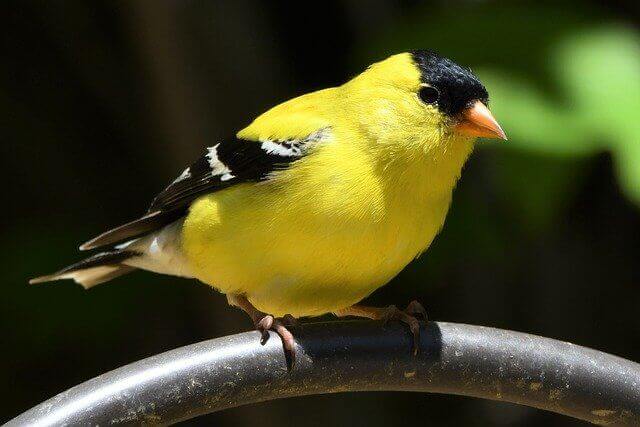
The American goldfinch is a small, energetic bird with a cheerful song. It is a favorite among birdwatchers and backyard birders alike. The American goldfinch is found throughout North America, from Alaska to Newfoundland and south to Mexico. It is a common sight in open fields, meadows, and roadsides. The American goldfinch feeds on seeds and insects.
In the summer, it eats mostly thistle seeds and other small seeds. In the winter, it feeds on sunflower seeds, millet, and other small grains. The American goldfinch is a social creature that often forms large flocks during migration. It is an important part of the ecosystem, providing food for many predators such as hawks and owls.
- Frequency: 17.50%
- Color: Face, neck, and underside are yellow, black wings with white bars
- Habitat: Deciduous forests and thickets, roadside, grasslands, backyards, meadows
- Range: Canada, USA and Mexico
- Size: 4.3 – 5.5″ inches length
- Weight: 12 -18 grams
- Diet: Grass, dandelions, chickweed, sunflowers and ragweed, thistle, red alder, birch, spruce seeds
- Family: Carduelinae
- Genus: Spinus
Related: American Goldfinch Interesting Facts
Eurasian Collared-Dove
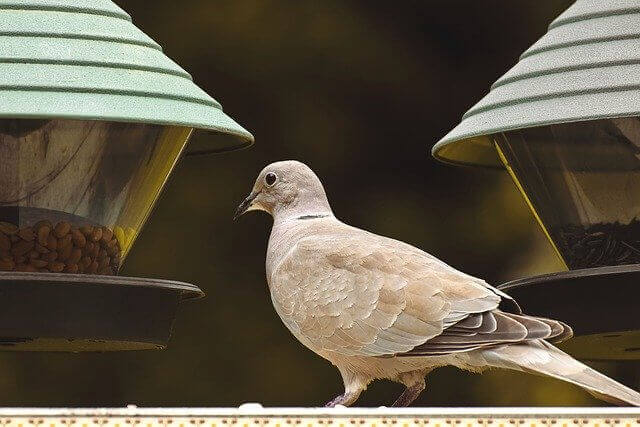
The Eurasian collared-dove is a species of dove that is native to parts of Europe, Asia, and Africa. It is a relatively small species, with a body length of around 33 cm (13 in). The plumage of the Eurasian collared-dove is pale gray, with darker gray markings on the wings and tail. The bird has a black collar around its neck, which gives it its name.
The natural range of the Eurasian collared-dove extends from Europe through Asia to Africa. In Europe, the bird is found in countries such as Spain, France, Italy, and Greece. In Asia, the range extends from Turkey eastwards through Kazakhstan and into China.
- Frequency: 17.45%
- Color: Pinkish-gray with ablack half-collar bar with white on its neck
- Habitat: Urban centres, farms, backyards, edges, yards, and parks
- Range: North America, Central America, South America, Europe, Asia
- Size: 13″ inches
- Weight: 150 grams
- Diet: Millet, milo, sunflower, wheat, corn and berries
- Family: Columbidae
- Genus: Streptopelia
Related: Best Bird Feeder For Doves (Reviewed & Tested for 2022)
The backyard birds below have a frequency of less than 16%
- Eastern Phoebe – 15.85% Frequency
- Scissor-tailed Flycatcher 15.80%
- Northern Flicker 15.55%
- Brown-headed Cowbird 14.94%
- Barn Swallow 14.41%
- Common Grackle 14.23%
- Eastern Meadowlark 13.67%
- Yellow-rumped Warbler 12.64%
- Rock Pigeon 9.96%
- Blue-gray Gnatcatcher 9.94%
- Great-tailed Grackle 9.66%
- Mississippi Kite 8.84%
- Harris’s Sparrow 8.60%
- Cedar Waxwing 8.59%
- Song Sparrow 8.54%
- Northern Shoveler 8.23%
- Belted Kingfisher 8.21%
- Brown Thrasher 8.08%
- White-crowned Sparrow 7.78%
- Field Sparrow 7.50%
- Ruby-throated Hummingbird 7.48%
- Indigo Bunting 7.28%
- White-throated Sparrow 7.27%
- Cliff Swallow 7.26%
- Eastern Kingbird 7.24%
- Lark Sparrow 6.74%
- Savannah Sparrow 6.66%
- White-breasted Nuthatch 6.51%
- Western Kingbird 6.47%
- Dickcissel 6.35%
- Fish Crow 6.22%
- Great Crested Flycatcher 6.13%
- Bewick’s Wren 6.05%
- Red-headed Woodpecker 5.81%
- Painted Bunting 5.79%
- Pileated Woodpecker 5.42%
- Ruby-crowned Kinglet 5.35%
- Yellow-billed Cuckoo 5.34%
- Chipping Sparrow 5.22%
- Purple Martin 5.01%
Frequently Asked Questions
What’s the most common bird in Oklahoma?
According to eBird, a website that collects data on bird sightings from around the world, the Northern Cardinal has a frequency of occurrence of 51.58%. That means that if you see any bird in Oklahoma, there’s more than half a chance it will be a cardinal.
What kind of birds are native to Oklahoma?
Oklahoma is home to a variety of birds, including the Northern Cardinal, Eastern Bluebird, Carolina Chickadee, Red-bellied Woodpecker, and Tufted Titmouse. These birds are all native to Oklahoma and can be found in a variety of habitats throughout the state.
What is the rarest bird in Oklahoma?
The Black-throated Gray Warbler is the rarest bird in Oklahoma with a frequency of occurrence of only 0.0004% according to eBird. This warbler is a small songbird with a black throat and upper body, gray wings and tail, and white underparts. It breeds in coniferous forests in the western United States and winters in Mexico. In Oklahoma, it is most likely to be found in the western part of the state.
What bird sings at night in Oklahoma?
If you’re wondering what bird sings at night in Oklahoma, it’s likely either the American Robin or the Northern Mockingbird. Both of these birds are common in Oklahoma and are known for their vocalizations. The American Robin is most active during the day, but it will sing at night if there’s enough light. The Northern Mockingbird is more likely to sing at night because it’s nocturnal. So, if you hear a bird singing at night in Oklahoma, it’s probably one of these two species.
What wrens are in Oklahoma?
There are eight species of wrens in Oklahoma: Carolina Wren, Bewick’s Wren, House Wren, Marsh Wren, Winter Wren, Canyon Wren, Rock Wren, and Sedge Wren. All of these wrens are small songbirds with short tails that they often hold upright. They are found in a variety of habitats throughout the state. The Carolina Wren is the largest and most common wren in Oklahoma.
Does Oklahoma have ravens or crows?
Oklahoma is home to two species of ravens, the Common Raven and the Chihuahuan Raven, as well as two species of crows, the American Crow and the Fish Crow. The Common Raven and the American Crow are the most commonly seen in the state.
Does Oklahoma have grouse?
Oklahoma is home to two species of grouse, the Greater Prairie-Chicken and the Lesser Prairie-Chicken. Although these birds are not as common as they once were, they can still be found in certain areas of the state.
Are there grackles in Oklahoma?
Yes, there are two species of grackles found in Oklahoma, the Common Grackle and the Great-tailed Grackle. Though they are both found in North America, the Common Grackle is more widespread and can be found in most of Oklahoma. The Great-tailed Grackle, on the other hand, is largely concentrated in southern Oklahoma.
Are there blue jays in Oklahoma?
Yes, there are blue jays in Oklahoma. The blue jay is a very common bird in North America, and Oklahoma is no exception. These beautiful birds can be found in many different habitats across the state, from forests to fields to backyards. While they may not be as abundant as some other bird species, blue jays are still a common sight in Oklahoma.
Are there Whippoorwills in Oklahoma?
There are Whippoorwills in Oklahoma, but they are very rare. According to eBird, the frequency of occurrence for Eastern Whip-poor-wills is only 0.0692%. This means that if you’re looking for Whippoorwills in Oklahoma, you’re unlikely to find them. However, if you do hear their distinctive call, it’s worth taking the time to look for them.
Are there meadowlarks in Oklahoma?
Yes, there are two types of meadowlarks in Oklahoma, the Eastern Meadowlark and the Western Meadowlark. The Eastern Meadowlark is by far the most common of the two. They are found in open fields and meadows across the state. The Western Meadowlark is less common, but can also be found in open areas throughout Oklahoma.


